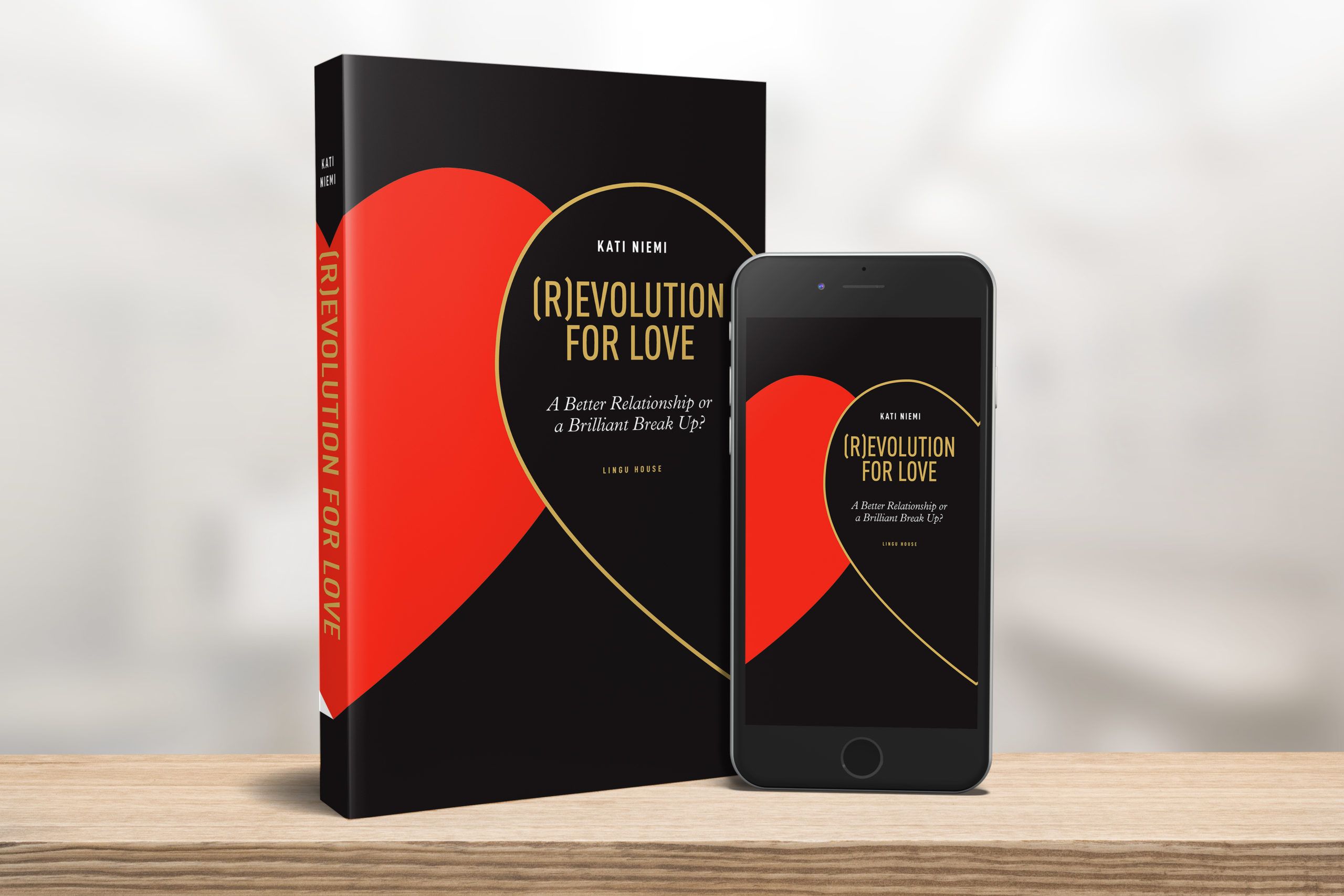Are you aware of how your childhood experiences and your emotional attachment style impact your relationship with your spouse and with other people? Or if you have ever wondered why it is difficult to have a warm relationship with someone or why some people want to be “chased”. Read this article about a very important psychological topic: the attachment styles and how they affect adult relationships.
All of us develop our own attachment styles which affect our life also in adulthood. What we develop will affect our adult relationships and also the relationship we have with our own children.
After reading this article you notice which attachment style you have, and you may also see the reasons behind that. When you understand yourself and your partner better, you may find the solutions to improve your relationship.
What is an attachment style?
An attachment style is a general expectation we develop about relationships with other people. It develops from the instant a person is born, and it affect also in adulthood.
There are four styles of attachment. These form during childhood, based on our relationships with our caregivers – usually with our parents, especially with our mom or another primary caregiver.

Online Coaching
Happy to help you! Welcome to book your online coaching session with the certified Coach, NLP Trainer, and Clinical Hypnotherapist Kati Niemi! Please select your
Science has shown that attachments among people begin when they are in their mother’s womb, and the environment they are brought up in greatly influences the attachments they will have as adults. It is for this reason that there are many courses in good parenting and how parents should connect with their children physically and emotionally.
What are the 4 different relationship attachment styles?
There are four major styles. I will discuss all these in this article with examples.
There are specific characteristics that describe each attachment style. According to the psychological attachment theory developed first by psychiatrist John Bowlby and later developed further by psychologist Mary Ainsworth, the four major attachment styles are:
-
- Secure attachment style
-
- Ambivalent attachment style (or anxious-preoccupied attachment style)
-
- Avoidant attachment style (or dismissive-avoidant attachment style)
-
- Disorganized attachment style (or fearful-avoidant attachment style)
In this article, we shall discuss the attachment styles among children and adults and clarify the connections between these two groups of people. We shall also discern how attachment styles in children influence the type of adults people become.
How does early attachment affect later relationships?
Attachments are the connections that people form among each other. Early attachments are important, as they determine the type of people we are and the attachments we seek to have in many ways.

How to improve your wellbeing through self-development?
Science has revealed: some adults are not mentally sufficiently developed. How to improve your wellbeing through self-development?
The general knowledge is that children have more physical and emotional needs than adults, but there seems to be a variance in this analogy (Ainsworth et al., 2015). Children’s attachment styles influence the type of attachment styles in adults, although as people grow up and get exposed to different environments, there is the likelihood of these attachment styles changing.
Recognition of attachment styles is imminent, and in all factions, people usually want to understand how they are viewed and appreciated in society. This aspect is mainly evident in adult relationships, and partners always want to know how you feel about them. Even though a partner may not ask explicitly of their position, sometimes they would demand this through their reactions.
Are females more attached than males?
There is the assumption that females have an increased need to feel attached and that their words and actions can be categorized unilaterally. However, tendencies are different depending on the attachment style of an individual. Attachment styles cannot be defined according to gender or age.
Everyone has an attachment style, and the difference is in the variance. There are some people that are more attached while there are some that are less attached. Then there is also another group that does not seem to care whether or not they are attached to people.
Four styles of adult attachment are formed in childhood
The environment of a child’s parent while growing up will influence the attachment style that will be formed in the child. A parent’s character forms the decisions and behavior of children.
Parents can be classified differently; there are supportive parents, dismissive parents, loving and caring parents, non-caring and abusive parents. Parents can be further divided on the context of the argument and the subject of discussion.

FREE AUDIOBOOK: Audible, Google Play and other stores’ free trial
Audiobook lovers benefit from FREE trial periods of book stores. Enjoy (R)evolution for Love on Amazon Audible, Google Play & other stores
It is critical to understand that a child will adjust to the character of the parent and conform to these four types of attachment styles (secure attachment, avoidant attachment, ambivalent attachment, and disorganized attachment).
How can you know which attachment style you have? Or how securely is your child attached?
Numerous researches have been conducted to ascertain how these attachment styles are formed and how children with each of them behave. The common one was done by psychologist Mary Ainsworth in 1971, which was an expansion of John Bowlby’s ‘strange situation’ experiment.
In the experiment, there were three sets of people, and two of them were under study, although the child was the primary focus. In the experiment, we had a child, their parent, and a stranger. Placed in opposite corners, the researchers studied how the child interacted with the environment and the parent before the stranger was brought in to interact with the parent and the child. Suddenly the parent leaves quietly, and the stranger interacts with the child alone; later, the parent comes in to comfort the child. Through the experiment, the parents’ and children’s attachment styles revealed themselves.
In this article, we shall discuss the characteristics of adults with the same attachment styles and note the differences. A vocabulary that will be used in tandem with ‘parent’ is ‘caregiver’ to acknowledge that the styles are common to both biological and non-biological parents. Let’s start with the secure attachment style and its characteristics in childhood and adulthood.
Secure Attachment Style
Children in this style are exceptionally attached to their parents to the extent that they are not comfortable with strangers. Parents are a source of confidence and pride to these children, and they openly express affection and love.

Narcissism in a Relationship: “How to Know if My Partner Is a Narcissist?”
What are the signs and causes of narcissism? Can you make a relationship with a narcissist work? Can you heal a narcissistic partner?
Children with a secure attachment style show good behavior when in the same company, and they have high levels of empathy. Compared to children with other attachment styles, they are less disruptive and aggressive. Children with a secure attachment style heed the words and advice of their parents. In public and private, they prefer playing with parents and caregivers, and they are more open to their peers. The parents and caregivers have a direct influence on this style; for a child to develop a secure attachment style, the parent must be physically and emotionally available. The needs of the child are met almost instantly, and there are fewer chances for wrangles.
As these children grow up, these characteristics manifest. Adults with secure attachment style are more social. They believe in connections, and they trust people easily. Communication is easy for adults with a secure attachment style, and they easily share their plans, experiences, and fear. Adults with a secure attachment style have good self-esteem and confidence among their peers, and they are more accommodative and understanding.
Among adults, secure attachment style compels them to have a steady relationship. They easily talk to their partner and are more likely to give solutions when challenges arise. Adults with a secure attachment style are more dependable and they dedicate their time to their partners and family. Rarely do such adults become suspicious or worried about their relationships because they are open.
Ambivalent Attachment Style
Ambivalent attachment style is almost confusing because the child is not affectionate to a stranger or a caregiver. When the parent leaves, the child is in utter distress, and when the parent returns they don’t comfort the child. Only the level of distress reduces in this case. When the parent tries to be close, the child repels and may become aggressive. The parent only seems to be a source of partial reassurance but not solid confidence.

When positive thinking becomes toxic
What is too positive thinking like? Where should we focus the power of our mind and our willpower?
The trend transcends into adulthood, and a person with an ambivalent attachment style is less likely to attach to others. From a personal perspective, it is difficult to understand whether this person needs or does not need affection. While in a relationship, they worry that their partners do not love them, although they do not make an effort to show love themselves (Cassidy & Berlin, 1994).
Adults with an ambivalent attachment style are in distress when relationships end, and they are more likely to become dramatic when they know the relationship may end. In case a marriage ends, a partner like this is more likely to cling to the child for support and security.
In relationships they are more likely to become snobbish when they feel undermined. Silent treatment is one of their traits when they feel offended and they like arguing on how they are right. Not arguing back is the best option when they are angry because it escalates conflicts.
Adults with an ambivalent attachment style are more suspicious of their partners and they take a long time to build trust. Such habits are common among both males and females. When you notice your partner to have such traits the best advice is to talk gently when conflicts arise.
Avoidant Attachment Style: Do avoidants like others chasing them?
Children with this style are less likely to seek the attention of their parents. Due to lack of attention, they can easily choose a stranger over a parent and vice versa. The main point is that avoidant children do now attract or require attention or affection from caregivers or strangers.

What is an open relationship? Does it lead to breaking up?
What is an open relationship? Who are non-monogamous open relationships for? Is your partner suggesting consensual non-monogamy?
In some Western cultures especially, parents may encourage the child to be independent early on, but it does not mean necessarily that the child has an avoidant attachment style. Children who do have it seem to be independent in thought and action, and rarely seek guidance. And even when given, avoidant children rarely follow advice. Parents that are dismissive and abusive are more likely to raise these kinds of children. The attachment style becomes a survival technique for the child.
When children with this avoidant attachment style grow, they usually have intimacy problems (McCarthy, 1999). In their adult relationships, they are less likely to show affection or require it. These people are withdrawn and always seem to be busy with myriad excuses. Engaging in casual sex is more common among adults with this characteristic, and their partners cannot depend on them. Even in distressing times, they always have excuses to avoid being close in the relationship. From their perspectives, relationships are not important, and they would rather focus on other issues like their professions or hobbies.

INFIDELITY and the collected excuses: The good reasons for cheating
CHEATING: What is a good reason to cheat? What do the cheated partner, “the other woman/man” or the cheater choose to believe in?
Avoidant adults perceive their securely attached partners’ healthy emotional attachment as neediness. If you feel you need to “chase” your partner, it may be that you are in a relationship with an avoidant spouse.
Disorganized Attachment Styles
Children with this style are not clear on how they perceive emotions, as their parent also may not know when the child needs attention and affection. The children behave erratically, sometimes they may need attention, while other times, they openly detest it. They also do not know whether a stranger or a parent is important; just like avoidant children, they may choose to be close to a parent or a stranger.
Parents that are mostly physically unavailable prompt this kind of behavior among children.
They behave in this manner because they do not know who to rely on and when. Parents that are reassuring and frightening also raise these type of children. In a practical sense, the child withdraws from the parent if they are frightening and they fail to show emotional support (Reisz et al., 2018). They then come closer, and attachments grow when the caregivers or parents become reassuring. They then strive to become independent.
However, these children are unique in the sense that they may assume to be the parents in their families and this behavior continues as they grow older. In a relationship, they are more likely to be the caregivers, and they become closer to their children. Main and Solomon are some psychologists that helped build the theory that such children assume parental roles when they reach age six, thus showing that the attachment styles manifest as children grow older within the same environment (Reisz, Duschinsky & Siegel, 2018).
Among adults there is a mixed way in how partners with disorganized attachment handle their relationships. Sometimes they are responsible and other times they do not care. They are reassuring in some cases and in others they stress on being independent and self-reliant. Their partners must understand that the mood changes have nothing to do with them and the best action to take when they are snobbish is to give them time. Such partners usually come back and are closer than when they left. Apprehending or confronting such partners pushes them further away because they like their peace of mind.

Motivating You to mindshifting in many ways,
Your Coach Kati Niemi
Clinical Hypnotherapist, NLP Trainer, M.Sc.
[email protected]

“FIVE STARS!” Book reviews: (R)evolution for Love (Amazon Books)
“Five Stars!” Editorial reviews and reader reviews of (R)evolution for Love – A Better Relationship or a Brilliant Break Up? Amazon books

FEEDBACK TO LOVE! Reader reviews (Book+Blog)
RELATIONSHIP GUIDE: BOOK REVIEWS – We are blown over by the feedback the (R)evolution for Love relationship blog and guide have received. WOW!

FREE AUDIOBOOK: Audible, Google Play and other stores’ free trial
Audiobook lovers benefit from FREE trial periods of book stores. Enjoy (R)evolution for Love on Amazon Audible, Google Play & other stores

FREE EBOOK ‘I love you but…’ – To Break Up or Not to Break Up?
Refocus your energy now to improve your love life! This FREE ebook ‘I love you but…’ will help you move towards a better relationship or

How to improve your wellbeing through self-development?
Science has revealed: some adults are not mentally sufficiently developed. How to improve your wellbeing through self-development?

Why does our conscious mind question the power of the unconscious mind?
Is the power of the unconscious mind fake news and is trying to harness it to achieve our full potential a waste of time? What do we mean by the unconscious mind?

INFIDELITY and the collected excuses: The good reasons for cheating
CHEATING: What is a good reason to cheat? What do the cheated partner, “the other woman/man” or the cheater choose to believe in?

What is an open relationship? Does it lead to breaking up?
What is an open relationship? Who are non-monogamous open relationships for? Is your partner suggesting consensual non-monogamy?

Narcissism in a Relationship: “How to Know if My Partner Is a Narcissist?”
What are the signs and causes of narcissism? Can you make a relationship with a narcissist work? Can you heal a narcissistic partner?

Aromatherapy for Libido & Romance – The Best Essential Oils for Love
Sense of smell influences our sexual desire and performance. Aromatherapy tips and the best essential oils for romance, libido, sex and love.

When positive thinking becomes toxic
What is too positive thinking like? Where should we focus the power of our mind and our willpower?

TO BREAK UP OR NOT TO BREAK UP? Should I stay or should I go?
How do you know if you should leave or not. How to make the decision to break up or to improve your relationship? To break up or not?
References
Ainsworth, M. D. S., Blehar, M. C., Waters, E., & Wall, S. N. (2015). Patterns of attachment: A psychological study of the strange situation. Psychology Press.
Cassidy, J., & Berlin, L. J. (1994). The insecure/ambivalent pattern of attachment: Theory and research. Child development, 65(4), 971-991.
McCarthy, G. (1999). Attachment style and adult love relationships and friendships: A study of a group of women at risk of experiencing relationship difficulties. British Journal of Medical Psychology, 72(3), 305-321.
Reisz, S., Duschinsky, R., & Siegel, D. J. (2018). Disorganized attachment and defense: exploring John Bowlby’s unpublished reflections. Attachment & human development, 20(2), 107-134.


























